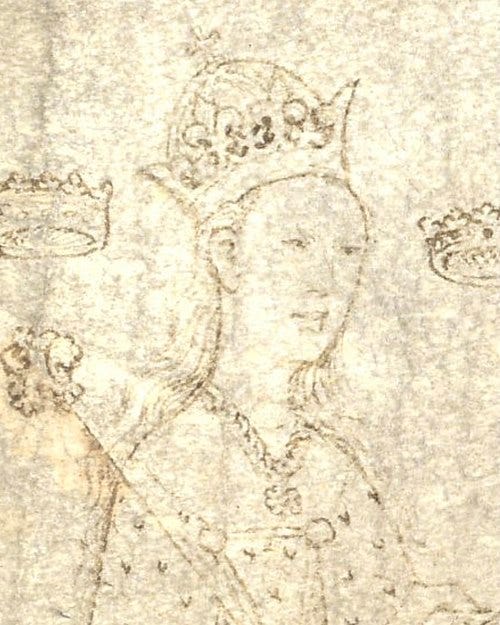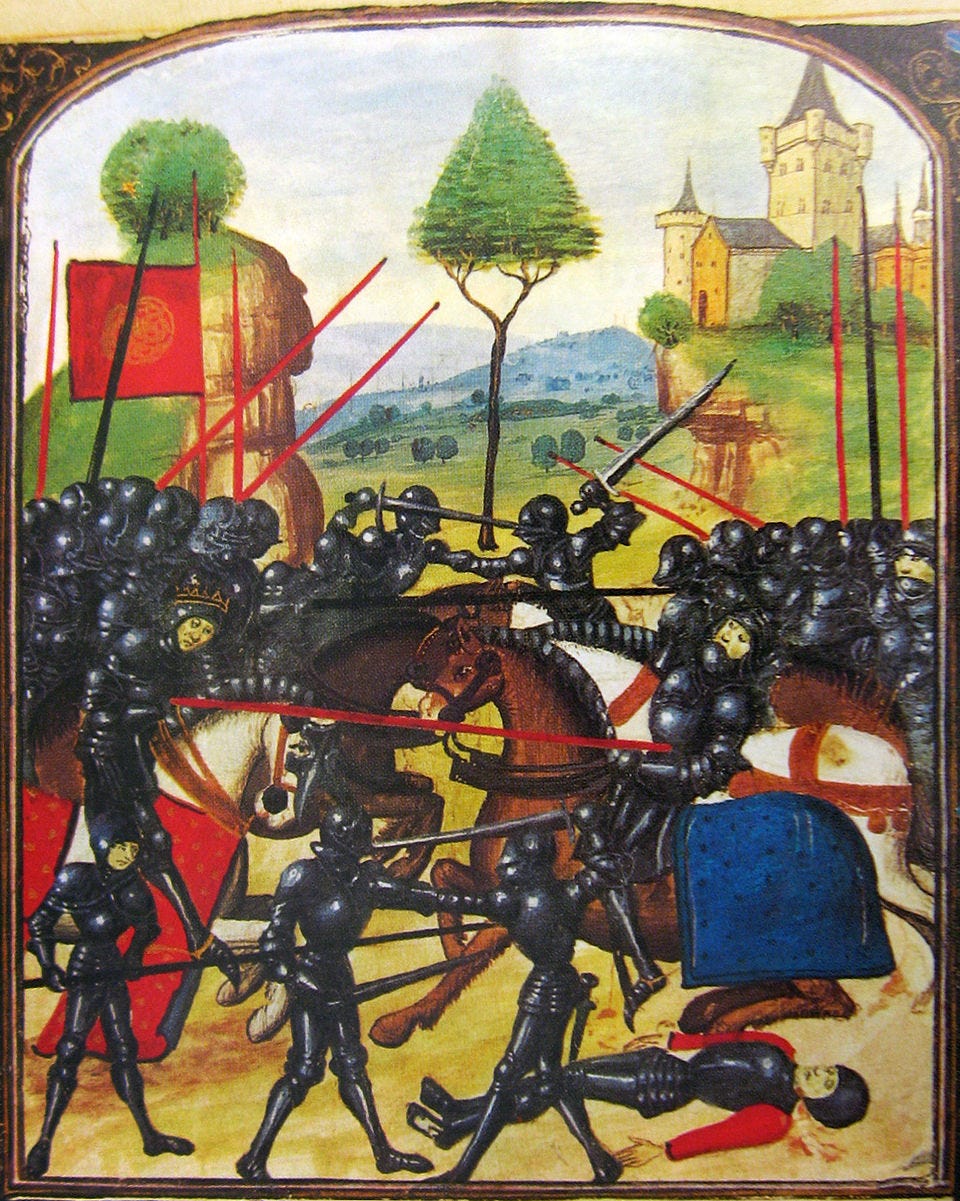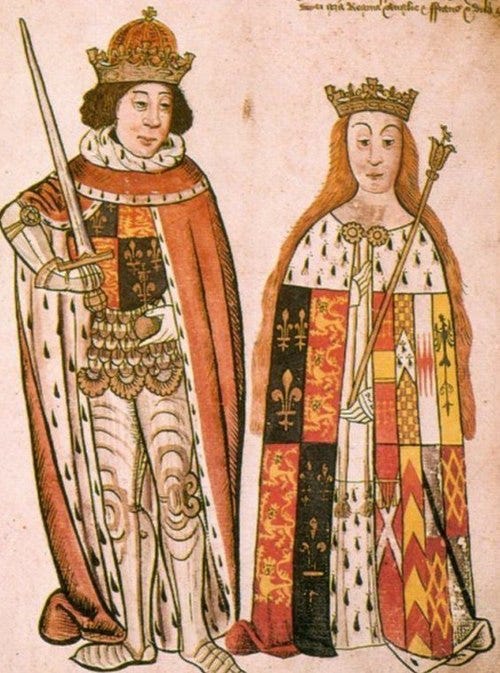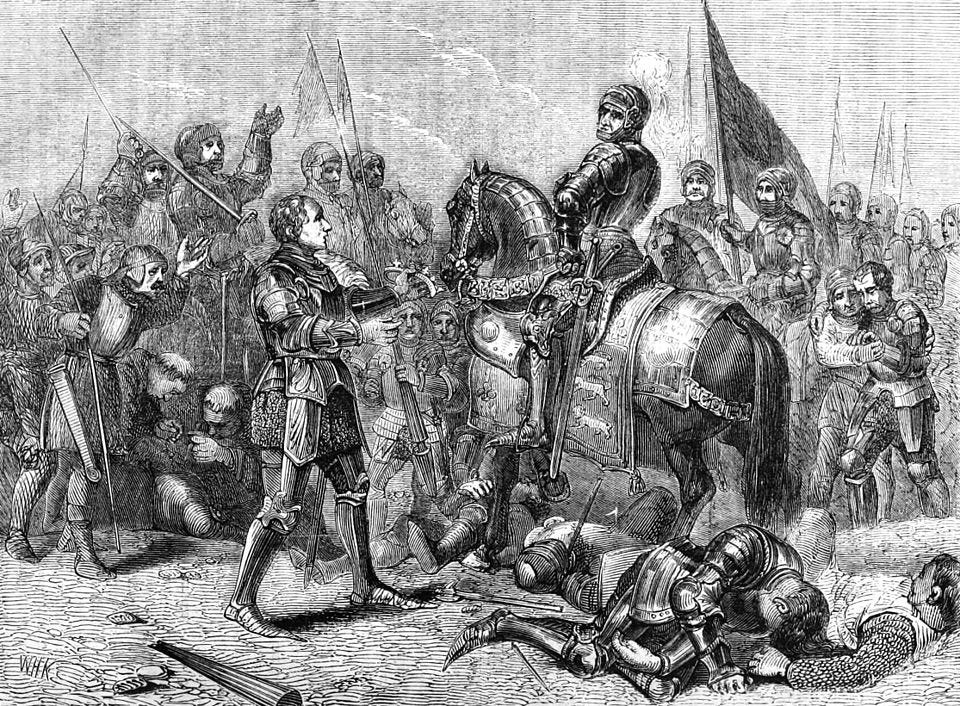Anne Neville and Richard of Gloucester (later Richard III) spent some time together as children in Middleham along with Anne’s sister, Isabel. When Anne and Isabel became of marrying age the pool of eligible suitors had been significantly shrunk. King Edward IV’s queen, Elizabeth Woodville, had arranged advantageous marriages for her sisters. Anne had a short first marriage, although her husband was tragically killed in the Battle of Barnet.
Due to the ongoing Wars of the Roses, Anne and Isabel did not have an opportunity to serve a queen as a lady-in-waiting. They had their mother to learn from, but they were missing a truly valuable experience for women of their stature. The lack of marriage prospects and other opportunities for his daughters greatly frustrated their father, Richard Neville.
Upon the death of King Edward IV, Richard was made Lord Protector of who was to be the new king, his nephew, Edward V. Elizabeth Woodville objected to this. She thought Richard was dangerous with that much power. Edward V never made it as king, as he and his brother Richard were confined to the Tower by their uncle. Richard had declared them illegitimate.
There was an understanding that Richard of Gloucester would marry Anne Neville. According to Waurin’s Chronicle, Richard was the husband originally selected for Anne. It was thought that he would use her for her familial wealth. He signed away most of his rights to the family land and wealth in order to marry her. One story suggests that George hid Anne in a cookshop to keep her away from Richard. The Croyland Chronicle told a similar story. Anne and her sister had an impressive lineage and their wealth as co-heiresses would be substantial.
Anne and Richard married in the spring/summer of 1472. Their wedding was shortly after the dispensation was issued. It is thought that the ceremony took place in the church of St. Deny’s, which was built in the 1470s.
Anne and Richard’s joint coronation was July 6th, 1483. During their coronation they walked barefoot on red cloth from Westminster Hall to the Abbey. This had been the first joint coronation in 175 years. The last was the coronation of Isabella of France and Edward II in 1308. Margaret Beaufort was present, carrying Anne’s train.
Anne’s train was more than 27 yards of shimmering white damask cloth of gold, bordered with ermine. She wore her waist length hair down symbolizing a bride going to her wedding. It would usually be pinned under a cap and veil. The crowning ceremony concluded with a procession to Westminster Hall before withdrawing to their chambers.
At 4:00 Anne rejoined Richard in Westminster for a feast that lasted late into the night. She was served by Margaret Beaufort and the Duchess of Norfolk. Anne’s influence over Richard before he became king is unknown due to a lack of written records.
Margaret Beaufort’s place in court was greatly beneficial for her as she worked with Elizabeth Woodville to remove Richard from the throne. They have a mutual disdain for him. Richard had kidnapped and likely killed two of Elizabeth’s children. Margaret's son had spent the last several years in exile because of Richard.
From Anne and Richard’s marriage to spring 1483 they lived mainly in the north. Between 1473 and 1476 Anne gave birth to a boy, Edward. He was born and raised at Middleham. The dates for Edward of Middleham’s birth are based on circumstantial evidence. It can be estimated from financial accounts.
It is estimated that Edward was only nine when he died. He was still under the care of women, which would cease when he came of a certain age and he would move to a more masculine environment. This evidence suggests he was still a young child upon his tragic passing.
With Edward’s untimely passing, Richard was without an heir. This would not be the only tragedy he would face within a short period. Anne passed away on March 16th, 1485, during an eclipse. There were rumors that Richard had her poisoned so he would be free to remarry in hopes of an heir.
Her funeral was organized by the Lord Chamberlain, Francis Lovell. He and Anne had been childhood friends at Middleham. It was followed by interment. Her burial place was meant to speed her soul from purgatory to heaven. It is thought that Richard intended to move Anne’s body to York Minster. He had not yet established the perpetual chantry he proposed at York.
Anne was buried on the south side of the Abbey’s High Altar in front of the priests. She had no grave marker, likely because Richard would die at the Battle of Bosworth in August of that year. Any plans Richard had for Anne’s burial place never came to fruition.
Richard was defeated by Henry Tudor at the Battle of Bosworth in August of 1485. This is thought to have been the final battle of the Wars of the Roses. With Richard defeated, Margaret Beaufort and Elizabeth Woodville were able to carry out their plan. Henry Tudor, Margaret’s son, was to marry Elizabeth of York, Elizabeth Woodville’s daughter. This was a very advantageous marriage as it united the houses, ultimately bringing an end to the Wars of the Roses.
Richard had only been king for just about two years. His remains were missing for hundreds of years. They were found on August 24th, 2012 under a modern day parking lot in Leicester, England. He had been buried at Greyfriars Church, which was demolished during Henry VIII’s dissolution of the monasteries. The search for his remains was spearheaded by Philippa Langley.
Sources:
Hickey, Julia A. Kingmaker’s Women: Anne Beauchamp and her daughters, Isabel and Anne Neville. Philadelphia, PA: Pen & Sword Books, 2023.
“Anne Neville, Wife of Richard III.” Westminster Abbey. Accessed April 27, 2025. https://www.westminster-abbey.org/abbey-commemorations/royals/anne-neville-wife-of-richard-iii.











For your information, Philippa Langley, not Philippa Gregory, was a key figure in the search for the remains of Richard III.